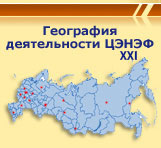 |
|
|
|
Resource of energy efficiency IN RUSSIA: scale, COSTS AND BENEFIPresent-day The Russian government is implementing power sector gradual liberalization program and announced substantial increase of domestic gas and electricity prices by 2011. If such energy price hike is not mitigated by energy efficiency improvements, affordability of energy services may shrink for many sectors, slowing down the economic growth. The government is presently working on the modernization of a federal program targeted to promote energy efficiency. The G8 summit chaired by The objective of this study is to identify areas with high energy efficiency potential and gauge the costs and benefits to help Energy efficiency potential was last evaluated in detail for the Development and implementation of energy efficiency policies require a more adequate mapping of the scale and structure of the energy efficiency potential. This report presents assessments of the technical, economic, and market energy efficiency potentials as of 2005. Energy efficiency potential is structured by economic activities and energy carriers in compliance with the matrix of Where it was possible (the electricity sector, a number of industrial plants), the energy efficiency potential was estimated based on the analysis of all facilities. In other instances (boiler-houses, buildings, etc.) it was estimated for a representative sample of facilities with further extrapolation for all energy consumers of this class in Like evaluations of oil and natural gas reserves, estimates of the energy efficiency potential scale and structure are of a probabilistic nature. Therefore, in many cases, the potential ranges are presented for various energy resources and economy sectors. If the potential is presented in one number, this number is assumptions-related and the accuracy of the potential assessment is no better than +5%. All assumptions for the energy efficiency potential assessments are thoroughly documented in this paper. This study has a number of other limitations, many of which result from unavailability and inaccuracy of data on energy consumption or energy consuming facilities, incomparability of Russian data with the information on energy use and specific energy consumption for other countries used for benchmarking. Among other factors, energy use and specific energy consumption depend on climate; scale and loads of energy using facilities; their time in operation; quality of maintenance and quality of processed materials; etc. Data on energy efficiency implementation costs, taken from Russian and foreign publications, as well as from feasibility studies developed by CENEf and other companies in 2000-2007, were used to evaluate economic and market energy efficiency potentials. For example, heat supply systems assessments were based on the results of municipal utilities and heat supply systems renovation programs implemented in Khanty-Mansiysky Autonomous Okrug, Orlovskaya, Sakhalinskaya, Magadanskaya, Tomskaya Oblasts, Khabarovsky Krai, and more than 60 cities, for which thorough data collection had been accomplished for several hundreds heat supply systems. CENEf used the results of programs developed for the residential and public sector in dozens of Russian municipalities, including under the World Bank project in Rostov Oblast and This paper was written for the World Bank by: I. Bashmakov (sections 1-7, 8.1-8.5; 8.7; 9); and CENEf experts K. Borisov (section 8.3), M. Dzedzichek (section 8.7), I. Gritsevitch (section 8.6), and A. Lunin (sections 8.1-8.2). Authors are very grateful to the experts from Moscow World Bank and IFC offices G. Sargsyan, Igor Bashmakov Executive director CENEf [1] I. Bashmakov and V. Chupyatov. Energy Conservation. The main factor for reducing greenhouse gas emissions in the former [2] I.A. Bashmakov and A.A. Beschinsky Editors. Comparative analysis of the energy sector development and energy efficiency in the |
|
| (c) 2007 г. "ЦЭНЭФ". Все права защищены. |



